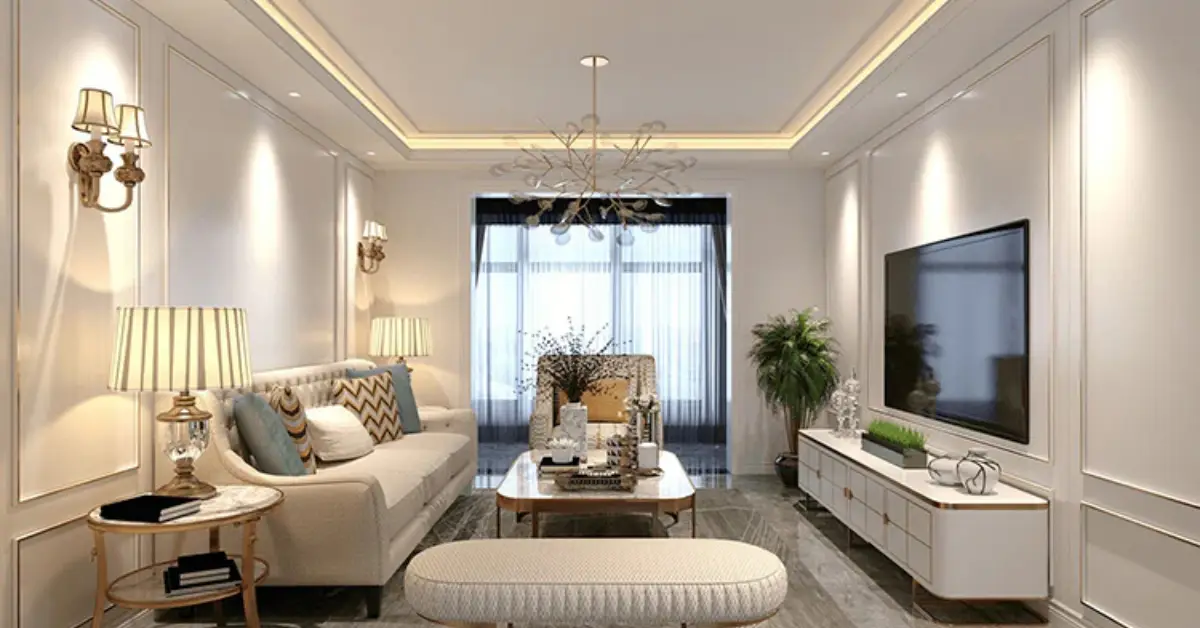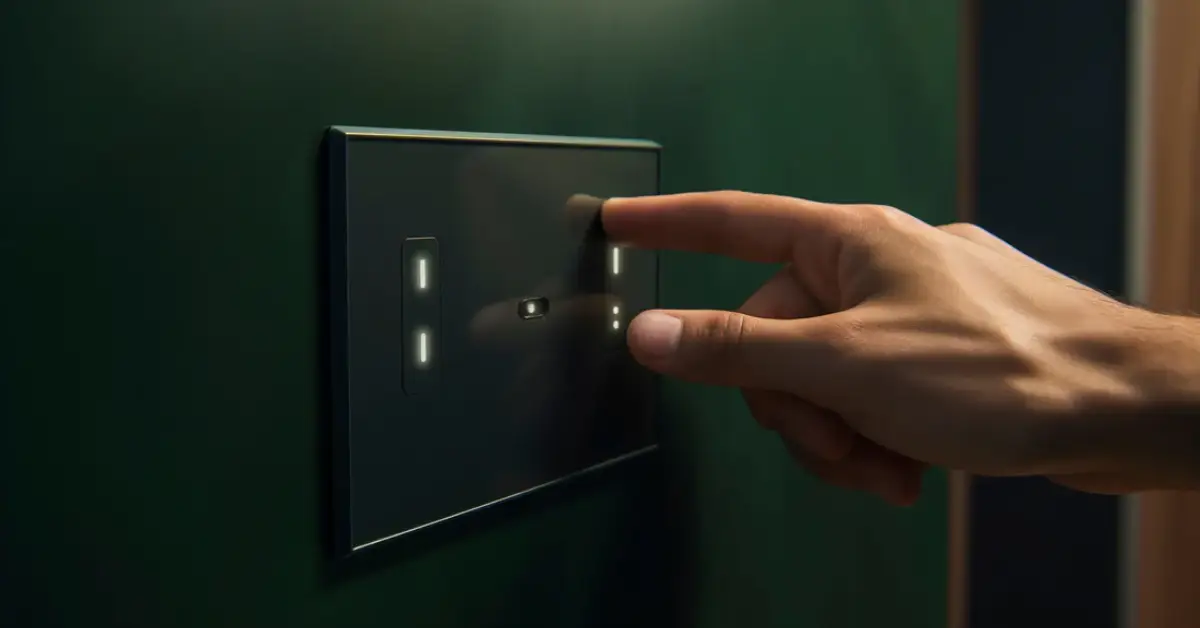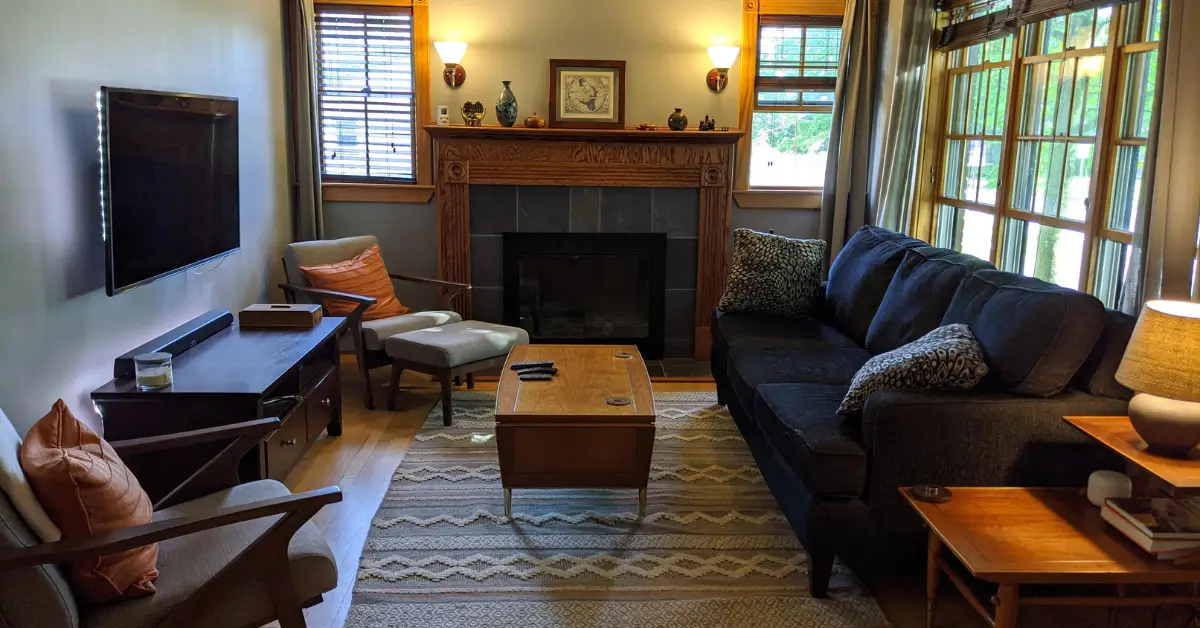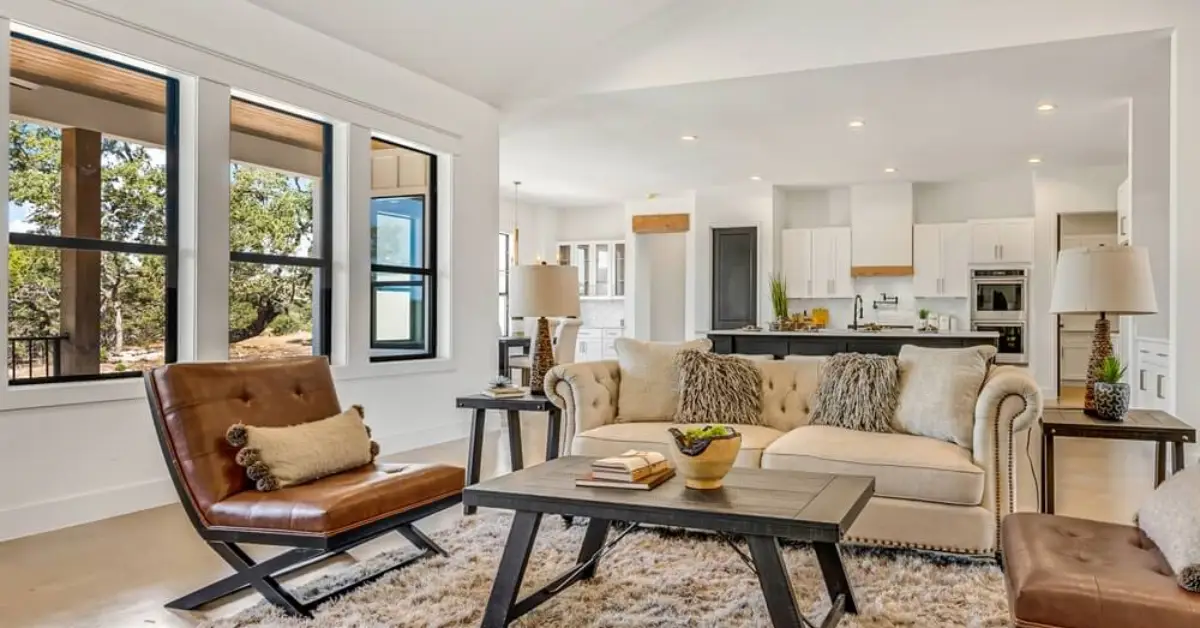10 Lighting Blunders That Are Ruining Your Home’s Vibe — And How to Fix Them Fast
You ever walk into a room in your own home and feel like something’s just… off? The furniture looks fine, the colors work, everything’s tidy — yet the space feels flat. I’ve seen this happen countless times, and nine out of ten, it’s not the decor. It’s the lighting.
Lighting can completely change how a home feels. It can make a small space look bigger, warm up a cold room, or turn an ordinary corner into a cozy retreat. But when it’s done wrong — and most of us don’t even realize we’re doing it wrong — it quietly drains the life out of the room. I’ve walked into stunning homes that felt dull simply because the light was too harsh, too dim, or just coming from the wrong place.
You don’t need a designer’s budget to fix it. What you need is to understand a few basic lighting principles — the same ones professionals use. That’s what we’ll go through here: the most common home lighting mistakes that make even the prettiest spaces feel uninspired, and exactly how to turn that around.
By the time you finish reading, you’ll know how to make your rooms glow the way they should — naturally, warmly, and with intention. You’ll see how a few small changes (like adjusting bulb temperature or adding layers of light) can completely shift how your space looks and feels.
So before you buy another lamp or swap your decor again, let’s talk about the light that’s already there — and how to make it finally work for you.
What part of your home do you think feels the dullest right now? Let’s start there.
Why Lighting Can Make or Break Your Home’s Look
I’ve walked into homes that had all the right elements — good furniture, trendy colors, thoughtful decor — and still felt lifeless. The culprit? Lighting. Most people think of lighting as a functional detail, but it’s actually the soul of a room. It shapes how everything looks and, more importantly, how you feel in that space.
Lighting sets the mood before anything else does. A soft glow can make a plain corner feel warm and inviting, while harsh overhead lighting can make even the best decor look flat or cold. One designer once said that lighting is the jewelry of a room — it’s what gives your space that finishing sparkle.
If your home feels dull or lacks warmth, chances are it’s not your furniture — it’s your lighting. Once you understand how to use light intentionally, every room can start to feel balanced, comfortable, and alive.
Quick takeaways:
- Lighting affects mood, perception, and even energy levels.
- The right mix of brightness and tone can make any space look more expensive.
- A single bulb choice can change how your wall colors and fabrics appear.
Mistake #1 — Relying Only on Overhead Lights

Let’s be honest — most homes rely on one big ceiling light in the middle of the room. It’s convenient, but it’s also one of the biggest reasons your space feels flat. When all your light comes from above, it creates harsh shadows and leaves the corners looking dark and lifeless.
The secret to professional-looking interiors isn’t brighter light — it’s layered light. Designers use a mix of:
- Ambient lighting: your general illumination (like ceiling or recessed lights).
- Task lighting: focused light for reading, cooking, or working.
- Accent lighting: subtle light to highlight art, textures, or architectural details.
When you start layering these types, your room instantly gains depth and warmth. You’ll notice how textures pop, furniture feels more defined, and the entire space starts to look intentional — not accidental.
Pro tip: Don’t be afraid to use lamps, sconces, and even candles. They’re not just decorative; they balance your lighting temperature and add personality to your home.
Mistake #2 — Ignoring Natural Light
No artificial light can match the beauty and honesty of sunlight. Yet, I see so many people blocking it out with heavy drapes or dark blinds — and then compensating with more lamps. Natural light not only makes your home look fresher, it also affects your mood and productivity.
According to Harvard Health, exposure to natural light during the day helps regulate your sleep cycle and improves overall well-being. That’s one reason why a bright, sunlit kitchen or living room always feels more energetic and alive.
If your home doesn’t get much daylight, try these simple adjustments:
- Use light, airy curtains that let light through.
- Add mirrors opposite windows to bounce sunlight deeper into the room.
- Choose warm paint tones that reflect light instead of absorbing it.
Before adjusting your lighting setup, make sure your windows and curtains are spotless — even a thin layer of dust can block natural light. My November Home Cleaning Checklist: 15 Tasks to Tackle Before the Holidays covers exactly how to prep your home for a brighter, fresher look before the season changes.
When you start paying attention to how natural light moves through your space, you’ll find you need fewer artificial lights — and your home will start to feel more open and peaceful.
So before you buy another bulb, take a moment tomorrow morning to notice how the sunlight falls in your home. You might be surprised at how much magic it already brings in.
Mistake #3 — Wrong Bulb Color Temperature
Here’s a truth most people miss: bright doesn’t always mean better. In fact, choosing the wrong bulb color temperature is one of the fastest ways to make your home feel cold and uncomfortable. I’ve seen so many homes where every bulb is the same glaring white — and while it might look “clean,” it quietly strips away warmth.
The key is understanding Kelvin (K) — the scale that defines how warm or cool your light looks.
- 2700K–3000K (Warm White): Perfect for bedrooms, living rooms, and dining areas. Cozy, inviting, and easy on the eyes.
- 3500K–4100K (Neutral White): Ideal for kitchens and bathrooms — clear enough for tasks without feeling sterile.
- 5000K+ (Cool Daylight): Best for garages, workspaces, or areas where you need focus and clarity.
According to Philips Lighting, matching your bulb temperature to each room’s function helps balance comfort and visibility. So before replacing all your bulbs, check the Kelvin rating — it’s right on the box.
Small change, big difference: switch your living room from 5000K to 2700K bulbs, and suddenly the space feels softer, calmer, and more human.
Mistake #4 — No Dimmers or Smart Controls

If your lights have only one setting — on or off — you’re missing out on half the atmosphere your room could have. A dimmer is like a volume knob for light. It gives you control over how your space feels at any given moment.
Think about it: you don’t want the same brightness for a movie night, a dinner with friends, and a morning coffee. Yet, that’s exactly what most fixed lighting does — it locks you into one mood.
Adding dimmers or smart bulbs lets you:
- Instantly adjust lighting to match the time of day.
- Save energy while enhancing comfort.
- Set scenes for relaxation, focus, or entertaining.
Mistake #5 — Poor Task Lighting in Kitchens and Bathrooms
These are the rooms where light truly needs to work. Yet, most people rely on a single overhead fixture — and then wonder why their countertop feels shadowy or their bathroom mirror looks unflattering.
Good task lighting means putting the right light where you actually need it:
- In kitchens: Add under-cabinet LED strips to brighten your counters.
- In bathrooms: Use sconces or vertical lights beside your mirror (not above it) to eliminate harsh shadows.
- In study areas: Pair desk lamps with wider shades for even illumination.
Here’s a quick visual contrast to remember:
Ceiling-only lighting = harsh shadows, dull textures.
Layered task lighting = clarity, depth, and warmth.
Once you make this change, you’ll notice colors look truer, food prep feels easier, and your reflection feels more natural. It’s not just aesthetics — it’s functionality that feels good. While upgrading your task lighting, it’s worth checking if your layout supports safety too — especially for older family members. Avoid common risks by reading 8 Common Home Changes That Harm Senior Safety so your kitchen and bathroom stay both stylish and secure.
Mistake #6 — Oversized or Undersized Fixtures
Lighting scale is one of those subtle design details that separates a professional-looking space from an awkward one. A fixture that’s too small can make a large room feel empty, while one that’s too big overwhelms everything around it.
A simple rule I’ve learned: the size of your chandelier or pendant should be roughly the sum of your room’s length and width (in feet) = diameter in inches. So if your room is 12×14 ft, a 26-inch-wide fixture usually feels balanced.
Quick checklist:
- Measure before you buy.
- Hang fixtures 30–34 inches above dining tables.
- In small rooms, pick a statement piece but keep it proportional.
Good lighting isn’t about showing off the fixture — it’s about how effortlessly it blends into your space. When scale feels right, everything else falls into place.
Mistake #7 — Cold LEDs in Cozy Spaces
You know that hospital-like glare some homes have at night? That’s usually the result of using cold, bluish LEDs in spaces meant for comfort. Bedrooms and living rooms should feel warm and restful — not like a showroom.
The problem is that many people assume “brighter” equals “better.” But light temperature has nothing to do with wattage — it’s all about color tone. Cold LEDs (4000K and above) make skin tones and fabrics look washed out, while warm-white bulbs (2700K–3000K) bring depth and calm.
When I switched my own bedroom lamps from cool white to warm white, the difference was instant — softer light, more natural color, and a calmer energy in the room.
Try this:
- Replace ceiling lights or table lamps with 2700K bulbs.
- Mix light sources (lamps, sconces, candles) for a layered warmth.
- Use dimmers to fine-tune mood in the evenings.
Small shift, huge emotional impact — especially in spaces where you unwind or connect.
Mistake #8 — Neglecting Corners and Artwork

A lot of people spend hours styling furniture but forget that light placement is just as important. When corners stay dark, your room feels smaller and heavier. And if you’ve got art on the walls, flat lighting erases all that texture and detail.
The fix isn’t complicated. Add spotlights, wall sconces, or small accent lamps that highlight overlooked areas. Even a narrow beam directed toward a painting or bookshelf can make the entire room feel more dynamic.
I often suggest pulling inspiration from design platforms like Houzz — they show real-world setups where light turns decor into a focal point.
A quick guide:
- Place floor lamps in dark corners to visually expand the space.
- Use art lights or adjustable spots to bring texture forward.
- Keep shadows intentional — they create depth and drama.
Balanced light doesn’t just make your home look better; it helps your eyes rest naturally, guiding attention where you want it most.
Mistake #9 — Ignoring the Ceiling and Floor Glow
Most people think of lighting as something that happens at eye level, but pros know it’s the vertical dimension that makes a space feel complete. Ignoring ceiling and floor lighting leaves your rooms looking flat, even if everything else is right.
Uplights and downlights — even subtle ones — add height and movement. Try installing floor lamps that cast light upward or LED strips above cabinets and behind crown molding. The soft glow makes walls look taller and adds quiet sophistication to any room.
Benefits of vertical lighting balance:
- Makes ceilings appear higher and rooms more open.
- Adds layered depth without increasing brightness.
- Highlights architectural features naturally.
This approach isn’t about brightness — it’s about balance. When your light flows both up and down, your home instantly feels more polished and alive.
Mistake #10 — Not Updating Fixtures Regularly
I’ve seen homeowners hold on to dated fixtures for a decade or more — even when everything else in the room has evolved. Lighting styles, finishes, and technologies change faster than most people realize, and outdated fixtures can quietly age your space.
Replacing them doesn’t have to mean a full renovation. Swapping a single pendant or wall light can modernize an entire area. Think of it as a wardrobe update for your home — small refresh, big payoff. Updating fixtures is just like updating decor — even seasonal themes can impact your home’s look and safety. If you love decorating for fall, make sure to read 5 Halloween Decor Mistakes That Could Invite Burglars Into Your Home before your next setup.
When to refresh your lighting:
- If a fixture hums, flickers, or discolors — it’s past its prime.
- When your decor or wall color changes.
- Every 5–7 years for aesthetic relevance.
Don’t think of new lighting as a splurge — think of it as the quickest way to bring life, personality, and modern comfort back into your home.
Bonus: Pro Lighting Formula by Room (Living, Kitchen, Bedroom, Bath)

By now, you’ve probably realized good lighting isn’t just about buying a few bulbs — it’s about choosing the right type and tone for each space. Here’s the simple, pro-level formula I use when helping clients fine-tune their homes. It’s practical, budget-friendly, and built around how you actually live.
Living Room
- Goal: Comfort + versatility.
- Formula: Mix ambient ceiling light (dimmable), 2–3 lamps for layering, and one accent spotlight for art or shelving.
- Color Temperature: 2700K–3000K (warm white).
- Lumens: 1,500–3,000 total for mid-size rooms.
Kitchen
- Goal: Bright and functional without glare.
- Formula: Recessed ceiling lights + under-cabinet LED strips + pendant lights over the island.
- Color Temperature: 3500K–4100K (neutral white).
- Lumens: 5,000–10,000 depending on size and counter area.
- Tip: Always test placement at night — harsh light directly above counters can cause deep shadows.
Bedroom
- Goal: Calm, cozy, and flexible.
- Formula: Warm bedside lamps + indirect ceiling light + soft LED strip behind the headboard (optional).
- Color Temperature: 2700K or below.
- Lumens: Around 2,000–4,000 total.
- Tip: Use smart bulbs or dimmers to shift from reading light to relaxation mode.
Bathroom
- Goal: Clarity without harshness.
- Formula: Wall-mounted sconces at face level + recessed ceiling light for general illumination.
- Color Temperature: 3000K–3500K.
- Lumens: 4,000–8,000 for an average-sized bath.
- Tip: Avoid lighting only from above — it exaggerates shadows and uneven tones.
Quick Checklist — Turn Dull to Dazzling
Use this mini checklist before buying or rearranging a single fixture:
- Replace cold LEDs with warm-white bulbs in cozy areas.
- Layer your lights — ambient, task, and accent.
- Add dimmers for control and atmosphere.
- Brighten corners and highlight artwork.
- Match fixture size to room scale.
- Let natural light in — adjust curtains or add mirrors.
- Refresh outdated fixtures every few years.
- Check color temperature (Kelvin) and brightness (lumens) before purchase.
Print it, save it, or share it — it’s your quick-start guide to lighting that actually feels good.
Final Word — Light as Home Therapy
I’ve always believed light has power far beyond visibility. The right lighting can lift your mood, calm your nerves, and even make you feel more connected to your space. Think of it as home therapy — one that doesn’t require major renovations or big spending.
Design psychologists often say our surroundings reflect our inner state. When your lighting feels balanced and warm, it subtly tells your brain, you’re home now. And that feeling — peace, comfort, belonging — is what good design is really about.
If there’s one thing to take away, it’s this: don’t chase perfection, chase feeling. Light your home like you’re creating moments, not just filling space.
Have a favorite lighting trick or a before-and-after story? Share it in the comments below — I’d love to hear how you’ve transformed your space.
And if you found this guide useful, head over to Build Like New for more hands-on design advice, real home inspiration, and easy upgrades that make your house feel brand new again.
Disclaimer: This article is for informational and educational purposes only. Lighting recommendations and measurements are general guidelines; actual needs may vary based on room size, layout, and individual preferences. Always follow safety standards and consult a certified electrician before making electrical changes.


